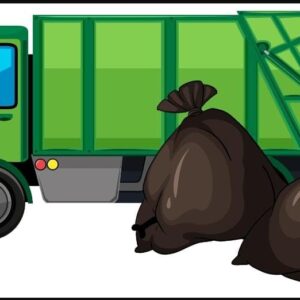Agriculture in the UK relies heavily on fuel—not just as a resource, but as a core driver of productivity. From tilling soil in Yorkshire to irrigating fields in Somerset, fuel keeps machinery running, crops growing, and operations efficient. But not all farmers pay the same price. In fact, regional fuel price variations across the UK are often overlooked despite their significant impact on farm budgets and long-term sustainability planning.
This article explores how and why agricultural fuel prices differ from one region to another, what causes these fluctuations, and how farmers can respond strategically.
Why Agricultural Fuel Prices Vary by Region
At a glance, fuel should be fuel—especially when it’s red diesel or gas oil, which is standard for agricultural use. However, regional pricing is shaped by a complex mix of factors:
-
Proximity to refineries and fuel terminals
-
Distribution infrastructure and delivery costs
-
Regional demand and consumption levels
-
Local supplier competition
-
Geographical challenges (rural terrain, road access, etc.)
The UK may be a relatively small island nation, but when it comes to fuel logistics, every mile—and every delivery challenge—counts.
Northern England and Scotland: Advantage in Proximity and Demand Balance
Regions such as Yorkshire, Cumbria, and central Scotland often benefit from more competitive agricultural fuel prices. Why?
-
Proximity to Supply Hubs
Scotland’s Grangemouth Refinery and fuel terminals in Teesside and Immingham serve nearby rural areas efficiently. The shorter the supply route, the lower the cost per litre. -
Lower Urban Competition
With fewer competing industries in northern rural zones, fuel suppliers can focus more on agriculture without the price spikes seen in dual-purpose areas. -
Established Supplier Networks
Many northern counties have long-standing agricultural supply chains, and regional distributors often offer bulk discounts or loyalty pricing to farming communities.
Typical Price Trend: Red diesel in North Yorkshire or Aberdeenshire is often 5–8p per litre cheaper than in southern counties. On large farms, this translates to thousands in savings per year.
South East and Greater London Area: High Demand, Higher Prices
In contrast, Kent, Sussex, and areas surrounding London face consistently higher agricultural fuel costs. Even though many ports and refineries are nearby, several pressures drive up prices:
-
High infrastructure congestion increases transportation time and costs.
-
Strong competition from commercial users (construction, transport, etc.) pushes prices up during peak periods.
-
Limited bulk storage options in built-up regions reduce the ability to stock up during low-price periods.
Farmers in these regions often face delivery surcharges, especially during spring planting and autumn harvest seasons.
South West and Wales: Beautiful But Pricey
Farming in areas like Devon, Cornwall, and rural Wales offers stunning landscapes—but comes with a logistical cost. These regions often have:
-
Longer delivery routes due to sparse rural infrastructure.
-
Challenging terrain that limits access to large tankers, leading to smaller, more frequent deliveries (at a higher per-litre cost).
-
Limited supplier choice, which reduces competition and price flexibility.
Though rich in farmland, the South West lacks the fuel depot density found elsewhere. As a result, prices here can be unpredictable, with some smallholders reporting fluctuations of up to 12p per litre within a single month.
East of England: Mixed Fortunes
The East Midlands and East Anglia—known for their agricultural output—present a mixed fuel pricing landscape. While demand is high, supplier competition can be fierce, helping control costs. However, because of intensive farming activity, peak season demand can lead to sharp, short-term price hikes.
Some suppliers introduce dynamic pricing, adjusting rates weekly based on local demand and delivery capacity. Farmers here need to be agile and monitor price movements closely to take advantage of dips.
Northern Ireland: A Market of Its Own
Northern Ireland’s fuel pricing structure is slightly different from mainland UK due to:
-
Its own import terminals and supply routes from both the UK and the Republic of Ireland.
-
Currency fluctuations with the Euro when importing from the Republic.
-
Localised competition, particularly in Antrim and Armagh, where farming density is high.
Fuel prices in Northern Ireland are often more stable, though rural border areas may face volatility linked to cross-border trade.
Highlands and Islands: Isolation Means Expense
Remote regions like the Scottish Highlands, Shetland, and Orkney Islands experience some of the highest agricultural fuel prices in the UK. Key reasons include:
-
Ferry and long-distance transport fees
-
Low fuel demand volume per delivery
-
Limited availability of alternative suppliers
Some farms in these areas mitigate costs through community fuel cooperatives, bulk buying arrangements, and seasonal fuel hoarding. However, this requires careful planning and investment in storage facilities.
Smart Strategies to Navigate Regional Price Differences
Regardless of your location, you can reduce the impact of regional pricing with a few proactive strategies:
-
Use a fuel buying group – Collective purchasing can yield better rates from suppliers.
-
Install on-site storage – Buy in bulk when prices are low and store securely.
-
Track price trends – Some agricultural platforms offer region-specific price tracking tools.
-
Negotiate annual contracts – Fixed pricing helps you avoid seasonal price surges.
-
Explore alternative fuels – Options like HVO fuel may offer long-term operational savings even if the upfront cost is higher.
Conclusion: Region Shapes Reality
While the UK may be united in legislation, it’s anything but uniform when it comes to agricultural fuel pricing. The disparities are real—and they matter. Whether you’re running a hillside farm in Wales or cultivating wheat in Lincolnshire, knowing the regional fuel market can help you forecast costs, negotiate better deals, and protect your bottom line.
Fuel may come from the same barrel, but in farming, where you are can be just as important as how much you use.



